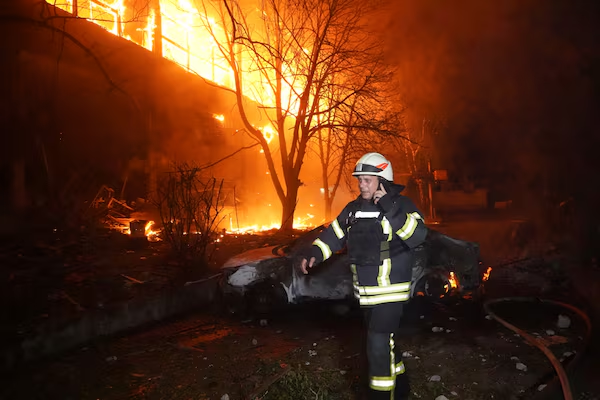A Ukrainian drone strike overnight hit a defense facility in Russia’s industrial city of Izhevsk, killing three people and injuring at least 35 others, according to officials in the Udmurtia region.
Aleksandr Brechalov, the regional governor, confirmed the casualties on July 1, saying the injured were being treated at a city hospital and that psychologists had been dispatched to support victims and their families. While Brechalov did not name the facility, Ukrainian sources claimed the target was the Kupol Izhevsk Electromechanical Plant.
Kupol is a major component of Russia’s defense manufacturing network. It produces the Tor surface-to-air missile system and the Garpia-A1 combat drone—both considered crucial to Moscow’s military operations. If confirmed, this would mark one of Ukraine’s deepest strikes into Russian territory in recent months, as Izhevsk lies more than 1,000 kilometers east of Moscow.
Footage shared on social media and Telegram channels appeared to show the moment of impact, followed by an explosion, though these clips have not been independently verified.
In response to the strike, Rosaviatsiya, Russia’s federal aviation agency, temporarily closed several airports, including those in Izhevsk, Saratov, Kazan, Ulyanovsk, and Nizhnekamsk.
Izhevsk is a vital military-industrial hub, home not only to Kupol but also to other key enterprises such as the Kalashnikov Group, the maker of the AK-series rifles and other weapons. It plays a central role in Russia’s arms supply chain.
Russia’s Defense Ministry said the attack on Izhevsk was part of a broader overnight drone campaign by Ukrainian forces. The ministry reported intercepting 60 drones across multiple regions, including annexed Crimea and the oblasts of Rostov, Kursk, Saratov, Belgorod, Voronezh, and Oryol, as well as areas near the Azov and Black seas. No specific damage figures were released.
Monday’s strike appears to be part of Ukraine’s ongoing strategy to hit military assets far from the front lines, targeting not only weapons stockpiles but also the industrial plants that sustain Russia’s war effort.

